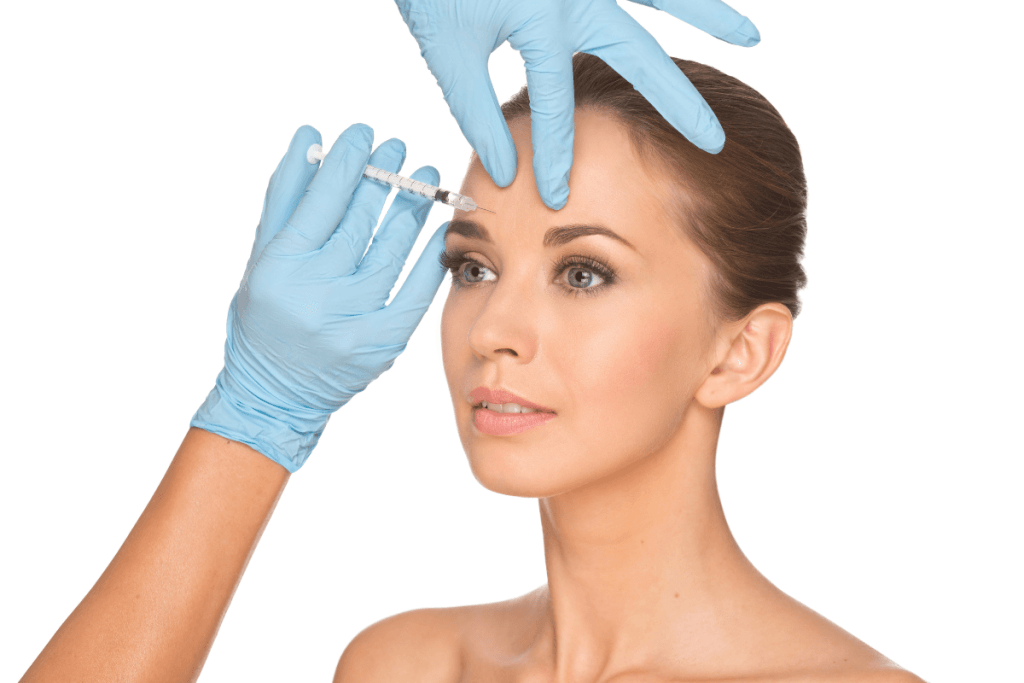Botulinum toxin type A treatments sit at the intersection of aesthetics and medicine. For clinics, the priority is consistent processes, conservative risk communication, and clean documentation. When you offer botox injections, operational details matter as much as technique. That includes product verification, lot tracking, storage conditions, and adverse event pathways.
This guide summarizes what the product is, what it is made from, and how to frame safety questions. It also covers practical workflow design, sourcing checks, and cost conversations. The goal is to support licensed teams who need repeatable, compliance-forward operations.
Key Takeaways
- Know the biologic: Botulinum toxin products are not interchangeable by “unit.”
- Plan the workflow: Consent, photos, lot logs, and follow-up should be standardized.
- Talk safety clearly: Discuss expected local effects and rare systemic risks.
- Set cost expectations: Avoid quoting vial-based estimates without context.
- Source responsibly: Verify distributor credentials and product traceability.
What Botox Is, and What It Is Made Of
Botox is a brand of botulinum toxin type A used for both cosmetic and medical indications. At a high level, botulinum toxin reduces signaling at the neuromuscular junction by inhibiting acetylcholine release. In plain terms, it temporarily relaxes targeted muscles. In some medical uses, the same mechanism can reduce gland activity, such as sweating, by affecting cholinergic (acetylcholine-mediated) nerve signals.
Procurement and clinical teams often field questions like “is Botox poison” or “is Botox made from botulism.” The accurate framing is that the active substance is derived from toxins produced by Clostridium botulinum, a bacterium associated with botulism illness. In regulated medical products, the toxin is purified and standardized for clinical use. The fact that a substance can be toxic at certain exposures does not, by itself, define its risk in controlled medical use. Your role is to keep explanations factual and tied to labeling.
“What animal is Botox made from?” and other origin questions
Patients sometimes assume the product is sourced from an animal because it is a “toxin.” Botulinum toxin itself is bacterial in origin, not animal-derived. However, biologic manufacturing can involve complex supply chains. Some processes in the broader pharmaceutical industry may use animal-derived materials at some stage (for example, in certain culture media), and final formulations can include stabilizing ingredients. Because these details can differ by manufacturer and region, the most defensible approach is to reference the official prescribing information for the specific product you use.
MedWholesaleSupplies supports purchasing by licensed clinics and qualified healthcare professionals.
From an operational perspective, treat botulinum toxin products like other regulated injectables. Verify the exact product name and labeling, confirm the presentation and packaging, and train staff to avoid casual substitutions. If your team needs a starting point for organizing product families, use the site’s Botox Category Hub as a navigation aid, then confirm each item against its official label.
Operational Planning for botox injections in Clinic Workflow
Reliable outcomes in aesthetic medicine often trace back to repeatable processes. Define who can receive product, who can prepare it, who can administer it, and who documents each step. Build a simple “single source of truth” for lot numbers, expiration dates, and the patient record location where those details live.
Patient-facing materials should be consistent across providers in your clinic. That includes consent language, pre- and post-procedure instructions, and a standard photo protocol. Photos are not just marketing assets. They are clinical documentation that can support continuity of care and objective follow-up.
Clinic workflow snapshot (high level)
- Verify product and documentation on receipt.
- Record lot/expiry in inventory and patient systems.
- Store per labeling and internal policy.
- Prepare using aseptic technique per protocol.
- Administer per clinician training and label guidance.
- Document sites, lot, and immediate tolerance.
- Schedule follow-up and record any reported effects.
Quick tip: Keep a single, standardized lot-log template across all treatment rooms.
Safety Framing: Expected Effects, Rare Risks, and Long-Term Questions
Most clinic questions are not about whether the product “works.” They are about risk, reversibility, and long-horizon safety. A useful structure is to separate common local effects from uncommon systemic effects, and to explain the limits of what is known. In day-to-day practice, botox injections are discussed as localized treatments, but the labeling for botulinum toxin products includes warnings about the potential for distant spread of toxin effect. That warning is one reason documentation and conservative patient selection protocols matter.
Commonly discussed effects include localized pain, swelling, bruising, and unwanted weakness in nearby muscles. Depending on the treatment area, patients may report eyelid droop, asymmetry, dry eye, headache, or changes in facial expression. Your clinic should also have a prepared script for rare but more serious symptoms that have been reported with botulinum toxins, such as swallowing or breathing difficulties. How you phrase this matters. Keep it neutral, avoid alarming language, and anchor statements to the official label.
Inventory is focused on authentic, brand-name medical products.
Why it matters: Consistent safety counseling reduces misunderstandings and improves documentation quality.
Questions like “can botox cause cancer” or “is botox safe long-term” are common online. There is no widely accepted clinical basis to describe botulinum toxin products as carcinogenic, and cancer is not a typical mechanism-based concern for a locally acting neurotoxin at therapeutic exposures. Still, you should not overstate certainty. A better approach is: cite the approved labeling, explain that safety data comes from trials and post-marketing surveillance, and document the patient’s questions and your responses. For “botox neurological side effects,” clarify that the intended pharmacology is neurologic (it acts on nerve signaling), while serious neurologic complications are uncommon and best discussed using label language.
For deeper internal education, it can help to keep one shared reference on adverse events and counseling. See Botox Side Effects Overview as a starting reading list for staff, then align on your clinic’s documentation standards.
Forehead and Upper-Face Treatments: Risk Controls That Scale
Upper-face treatments are among the most requested, and they can also be the most visible when something is off. Many “reasons not to get botox on forehead” discussed online trace back to mismatched expectations, pre-existing brow position, or an imbalanced treatment plan across adjacent muscle groups. For high-volume botox injections in the upper face, consistency is your friend. Standardized assessment and photography reduce subjective decision-making and help you track patterns across providers.
In the forehead, unwanted outcomes often relate to functional anatomy. The frontalis elevates the brows, while muscles in the glabellar complex contribute to frowning. If a patient relies on frontalis activity to keep the brows elevated, relaxing it can unmask heaviness. That is why “side effects of botox on forehead” frequently includes brow ptosis (droop), eyelid heaviness, or changes in expression. Headache is also a commonly reported complaint after forehead work, and it can be difficult to attribute to a single cause.
Pitfalls to avoid in forehead workflows
- Skipping baseline photos: makes subtle asymmetry hard to judge.
- Rushing the consult: increases expectation mismatch risk.
- Weak documentation: complicates follow-up conversations.
- Inconsistent aftercare: generates preventable patient calls.
- No escalation plan: delays response to concerning symptoms.
Two internal resources can support training conversations without replacing formal education. Review Botox Injection Sites for a shared language on areas, and keep Post Botox Headaches available for staff who triage common follow-up concerns.
Cost and Coverage Conversations: Build a Defensible Script
Cost questions often arrive framed as “how much is Botox” or “is botox expensive,” and many patients have seen online calculators. Your clinic can stay neutral by explaining what drives pricing variability without quoting vial-based assumptions. Even within the same market, botox injections costs can differ based on provider time, staff expertise, facility overhead, documentation requirements, follow-up structure, and how a clinic manages product waste. If you discuss a “50-unit vial” question, keep it general. Vial presentations vary by manufacturer and market, and the clinic’s acquisition cost is not the same as a patient fee.
Insurance questions need careful boundaries. Cosmetic treatments are commonly self-pay, while therapeutic indications may be covered depending on diagnosis, payer policy, and documentation. Prior authorization and step therapy requirements can shape access. If your practice mixes aesthetic and medical neuromodulator services, consider separate scripts and intake pathways to avoid confusion. When referencing “how much does botox cost with insurance,” stick to process explanations, not numbers.
How to build an internal estimator (without publishing prices)
Create a private worksheet that helps staff explain variability while staying compliant. Start with fixed components (consult time, clinical labor, consumables, documentation time). Then add variable components tied to treatment complexity and follow-up needs. Keep the model internal, and refresh it as overhead or staffing changes. If you want an educational resource to align staff language, see Cost Expectations and adapt it to your local policies.
It can also help to set expectations about duration and maintenance patterns without promising a timeframe. Use patient-friendly phrasing and point to official materials when possible. For staff education, Duration Of Effects can support consistent explanations across the team.
How to Compare Botulinum Toxin Products Without Overreaching
Many clinics evaluate more than one botulinum toxin type A product for operational flexibility. Decisions should be based on regulatory status, labeling, staff familiarity, and your clinic’s ability to standardize preparation and documentation. Avoid casual conversions. Potency “units” are product-specific and are not intended to be interchangeable across brands.
If you maintain a formulary, treat the comparison as a governance exercise. Define which product is used for which service lines, what training is required, and how substitutions are documented. When clinics expand beyond one product, consistency problems often show up first in charting and patient communication, not in purchasing.
| Comparison factor | Why it matters operationally | What to document |
|---|---|---|
| Approved labeling | Defines permitted uses and warnings | Label version referenced in protocol |
| Unit definition | Units are not cross-brand equivalents | Product name recorded for every visit |
| Preparation method | Process variation can drive errors | Internal SOP and staff competencies |
| Storage requirements | Affects inventory controls and audits | Receiving logs and temperature checks |
| Adverse event pathway | Supports consistent triage | Escalation notes and follow-up timing |
If you want background reading that compares concepts rather than making promises, see Botox Vs Dysport. For teams that also need procurement navigation, you may see listings such as BOTOX Listing, Dysport Overview, and Xeomin Overview to organize internal discussions about what you stock and why.
When standardizing documentation across service lines, write protocols that cover botox injections and any alternative toxin products in the same format.
Sourcing, Verification, and Recordkeeping for Regulated Injectables
Procurement is a clinical safety function. Build a verification checklist that is performed the same way every time, even when staffing changes. Confirm that your supplier serves licensed healthcare entities, and that your clinic’s purchasing account details match your licensure and authorized purchasers. In many practices, the compliance risk comes from informal purchasing processes, not from clinical work.
Traceability for botox injections starts at receiving, not at administration. On receipt, verify product name, packaging integrity, lot number, and expiration date, then record those details in a retrievable system. Storage should follow the product’s labeling and your internal policies. If you are operating with US distribution partners, confirm who is responsible for each handoff and what documentation is retained. Policies vary by jurisdiction, so align with your regulatory and accreditation requirements.
Products are sourced through vetted distribution partners.
Procurement checklist (clinic-facing)
- Authorized buyer: confirm license and role permissions.
- Supplier vetting: document distributor credentials.
- Receiving log: record lot and expiration promptly.
- Storage check: verify conditions match labeling.
- Segregation: separate quarantined or suspect stock.
- Incident plan: define who manages product complaints.
- Chart linkage: ensure lot numbers map to visits.
Quick tip: Audit your lot-to-chart linkage quarterly for completeness.
Operationally, a stable supplier model should support documentation needs and predictable replenishment. Many clinics prefer reliable US logistics to reduce uncertainty in receiving and inventory planning. Regardless of vendor, keep the same verification steps and do not shortcut traceability when schedules are busy.
Authoritative Sources
For safety language and contraindications, the prescribing information is the most defensible source. Use the exact label that corresponds to the product and jurisdiction you stock. When staff ask questions that drift into online myths, returning to regulator-published materials helps keep messaging consistent.
The links below are starting points for clinic education and policy alignment. They do not replace your professional training, internal protocols, or local regulatory requirements.
- FDA Drugs@FDA database for labeling and approvals
- FDA Drug Safety and Availability updates
- American Academy of Dermatology overview of botulinum toxin
Further reading can support internal training and patient-facing consistency. Keep your counseling language conservative, and align every statement to your product’s label and clinic policy.
This content is for informational purposes only and is not a substitute for professional medical advice.






